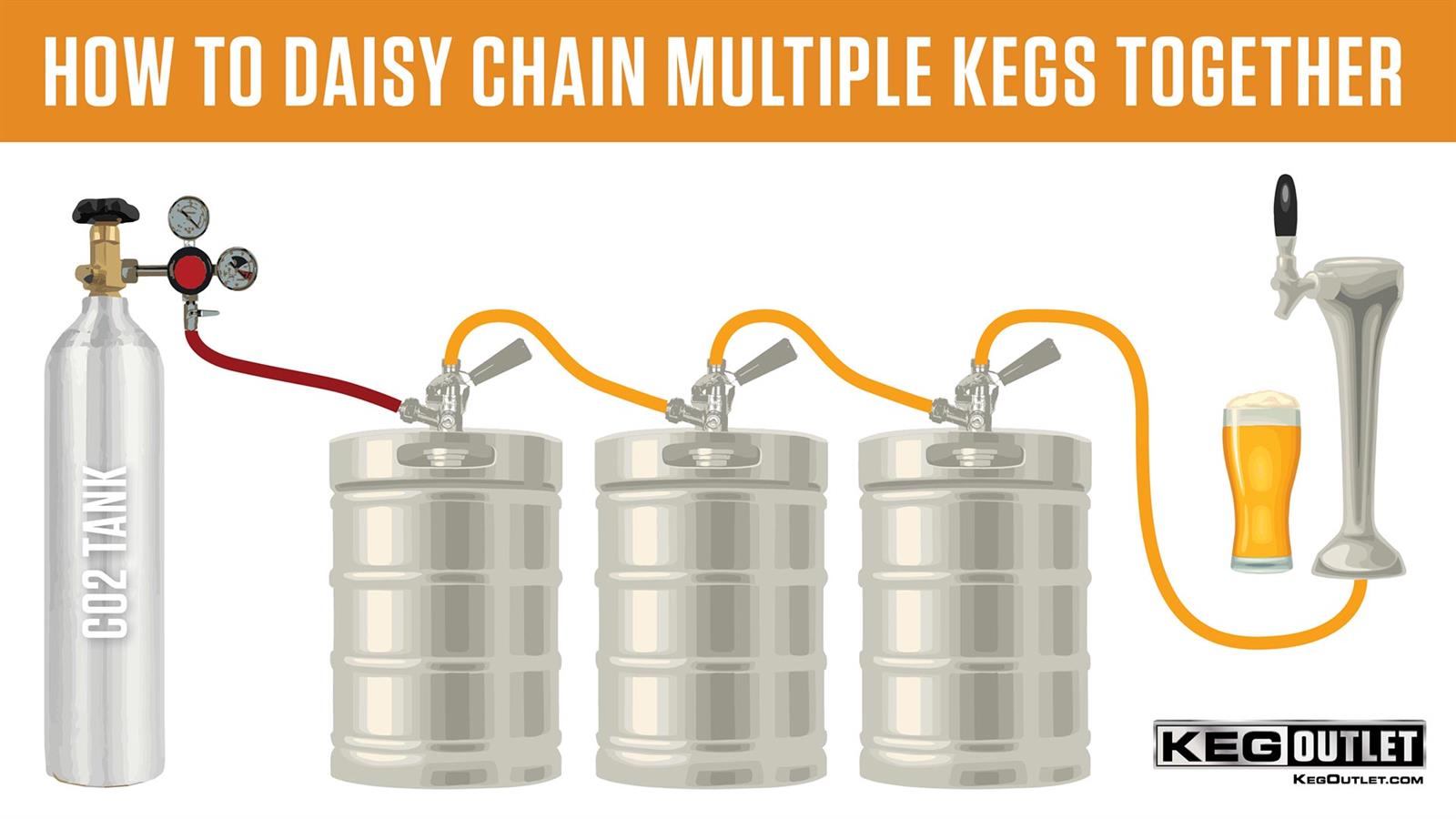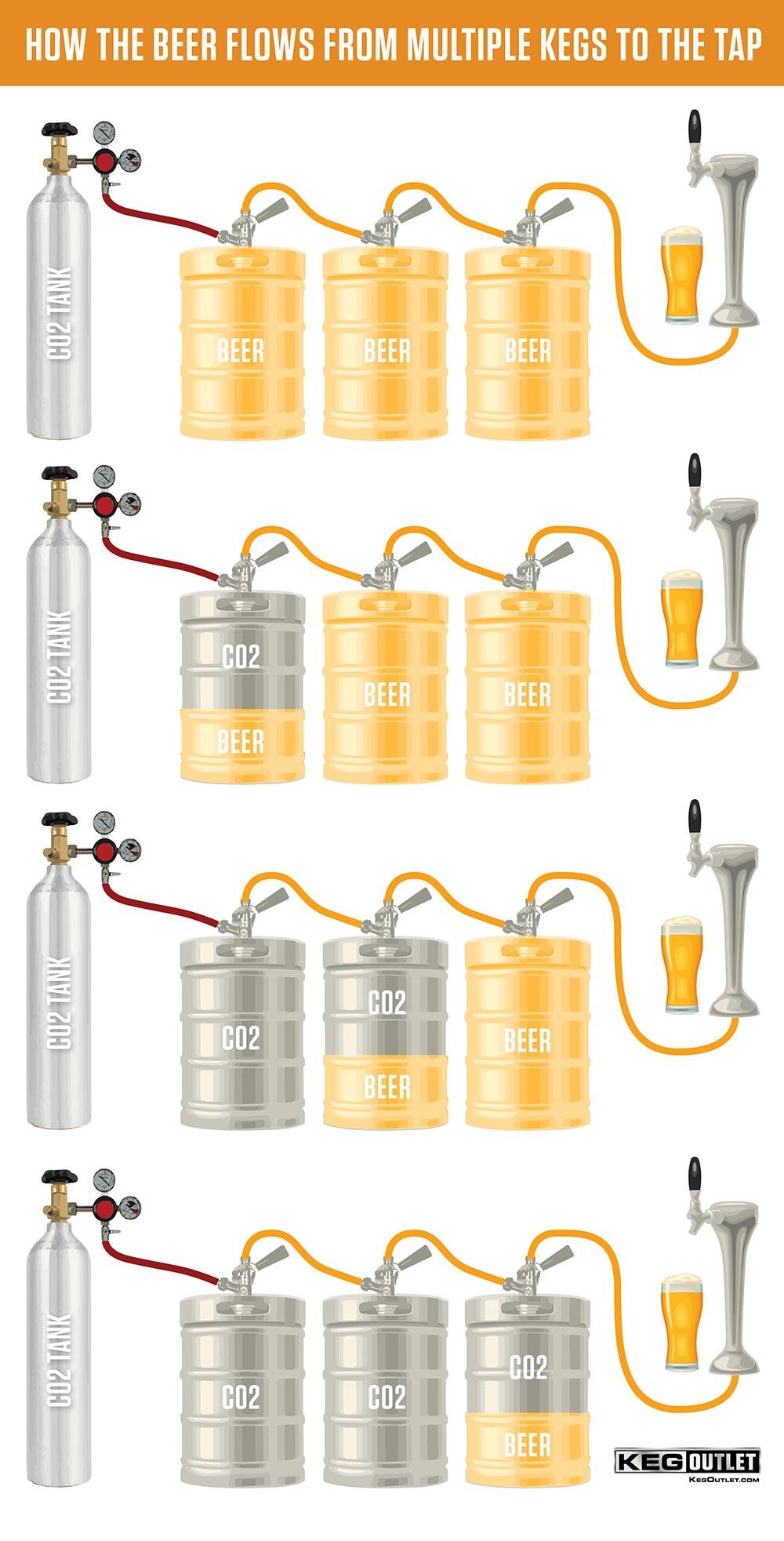Daisy Chaining multiple beer kegs together in series is a great way to keep the beer flowing and limit waste. This technique is very easy to do and lets you serve the same style beer or other beverage you might have on tap without having to swap kegs as they empty. All you need is your standard keg couplers to tap the kegs and liquid line jumpers to connect multiple couplers together.
Connecting multiple beer kegs in series to each other, will allow you to not only continually serve your beer without having to switch couplers on kegs, but will also save you beer in the process. Every time that a keg runs empty you get CO2 and foam in your lines. Once you tap your next keg, the beer will need to refill the lines and will be extremely foamy to start making you pour what could have been good beer down the drain. Eliminate excess beer waste by and save time by daisy-chaining beer kegs together in series!
What do you need to connect multiple kegs together?
- Gas Setup - CO2 Tank with Regulator and gas line and clamps
- Keg Couplers - You will need a keg coupler for every keg that you would like to serve from.
- Liquid Line Jumpers with washer - to connect each coupler together in series
How Your Draft System Looks with Connecting Multiple Kegs Together in Series

How the beer flows from one keg to the other when daisy-chained together
When you have all your kegs hooked up in series, the farthest keg from the tap will be the only keg with the CO2 gas on the input of the keg coupler. As beer is served from the tap, the beer from the closest keg to the tap will flow up through the lines and out the faucet. At the same time, the beer in the other kegs will push forward in series. See the below graphic for a visual explanation.

Adding / Rotating in Fresh Kegs
As your rotation gains momentum and you begin introducing new kegs into the lineup, it's essential to keep a few key points in mind:
- Any partially used keg should be relocated to the gas keg position (the first keg in the line closest to your gas assembly). This practice helps prevent getting air pockets in your lines which will result in foamy pours and wasted beer.
- Your oldest keg should be placed closest to the faucet tap because you will want to dispense the beer inside that before the kegs that are more freshly added. So the older the keg, the closer it should be positioned to the tap, and the newer the keg should be positioned close to your gas assembly setup.
Once you have your keg series flowing smoothly, you can rest assured that you won't need to replace empty kegs during the peak rush hours. This ensures a continuous supply of fresh products without having to keep customers waiting, and more importantly, having to prime foamy lines after keg swaps and waste beer.
How many kegs can you daisy chain together?
When considering linking kegs together, we first ask our customers how many kegs they will be going through in a week's time and that will usually give you a good idea of how many they should do. You don't want to have too many kegs daisy chained together for too long of time. Many times at events where there will be a hundred or more being served, customers like to link as many kegs as possible together to limit the downtime and changeovers when kegs run out. We recommended not exceding 8-10 kegs in a series in order to maintain a proper flow rate and consistent pours.